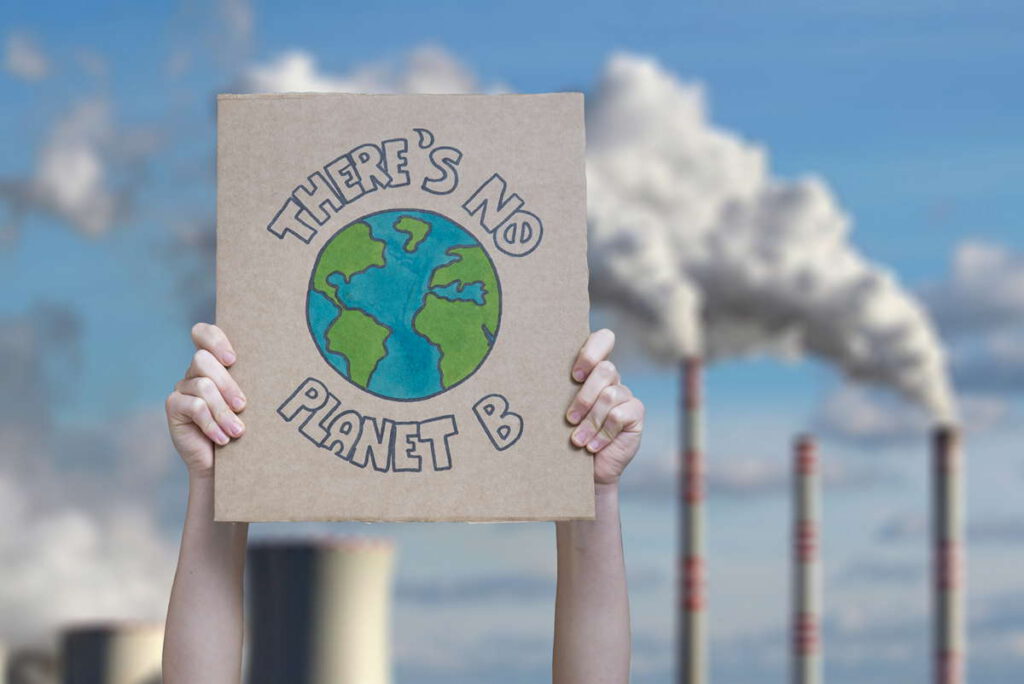2021 has seen issues relating to the environment becoming a key topic throughout the world, perhaps even displacing coronavirus, which has been the dominant theme of the last two years. In the context of an unusually cold winter and a hot, dry summer, which brought disaster and destruction in their wake virtually everywhere in the northern hemisphere, a demand has been developing in the international community to urgently take new steps to save the environment. In the war against climate warming and carbon dioxide – which was previously proclaimed virtually enemy number one of humanity – a movement is gathering strength against a new troublemaker: methane.
Methane, or СН4, is a main constituent of natural gas and is considered tens of times more powerful than carbon dioxide as a greenhouse gas; however, it has a sufficiently short life cycle in comparison. It was previously thought that its effect was immense, but not commensurable with the long-term effects of CО2.
But new research is increasingly showing that uncontrolled emissions of methane also make a large contribution to the greenhouse effect. These are associated with agriculture, where animal husbandry and many production and natural processes in particular account for as many as half of all methane emissions in many regions. The functioning of virtually any gas, coal or oil facility also involves methane leakage. The International Energy Agency (IEA) points out that in 2020, around a third of methane emissions, or 120 million tonnes, were related in one way or another to fossil fuels.
International actions

In August 2021, the UN’s Intergovernmental Panel on Climate Change (IPCC) published research stating that methane may be responsible for at least a quarter of global warming today. The fight against methane emissions, half of which are anthropogenic in nature, could therefore be a powerful means of combatting climate change in the coming decades. The need to monitor and control methane emissions has started to be talked about throughout the world, and ever more countries are including the topic of methane in their strategies for reducing greenhouse gas emissions and achieving climate neutrality.
Thus, at a plenary session of the European Parliament on 21 October, MEPs voted by a majority to adopt binding targets on reducing methane emissions. After the vote, Maria Spyraki, a Greek member of the European People’s Party and author of the report on an EU strategy to reduce methane emissions said, “With the catastrophic effects of this summer’s unprecedented floods and wildfires still being assessed, we need to intensify our efforts to tackle the challenges posed by extreme weather conditions. We need a quick win to tackle climate change! We must act immediately and achieve concrete results on reducing GHG emissions to protect people and the planet today and in the future. By setting binding methane reduction targets, the EU can play a key role in getting the rest of the world to do the same.”
Additionally, the Climate and Clean Air Coalition (CCAC) and the United Nations Environment Programme (UNEP) have launched the Global Methane Assessment programme, via which they have already concluded that if humanity manages to reduce methane emissions from economic activity by 45% in the near future, then these measures will allow the catastrophic trajectory of climate change to be altered. Moreover, this could prevent 255, 000 premature deaths; 775, 000 asthma-related hospital visits; 73 billion hours of lost labour due to extreme heat; and 26 million tonnes of crop losses globally.
One of the most ambitious steps so far has been the creation of the Global Methane Pledge, which was initiated by the United States and the European Union. The EU and US have made a joint declaration on the need to reduce global emissions of methane by 30% of 2020 levels by 2030. As at October 2021, a further 24 countries including Germany, France and Canada had declared their willingness to join the pledge. In particular, nine of the twenty countries with the highest volumes of methane emissions in the world are now taking part in the initiative.
US climate envoy John Kerry emphasized that the reduction was a global target, which means that it should be achieved collectively, and countries signing the pledge are not obliged to reach it individually. “Every community has a different starting point, but will do what they can in order to reduce methane emissions,” he said. It is expected that these measures will help slow down climate warming by at least 0.2˚C by 2050. But three of the greatest methane emitters in the world – China, Russia and India – have not yet taken steps to join the initiative.
The official start of the Global Methane Pledge was announced during the summit of world leaders at the United Nations Climate Change Conference of the Parties (COP26) which took place in Glasgow between the 31st of October and the 12th of November. In the run-up to the summit, many experts said that this meeting would be a turning point in the global climate trend: “Momentum is building for a methane moment at Glasgow,” said Fred Krupp, President of the Environmental Defense Fund, a US non-profit environmental organization.
In addition, more than twenty charitable institutions have announced combined commitments of over $223 million to support the implementation of the Global Methane Pledge. These organizations include such famous names as Bloomberg Philanthropies, the IKEA Foundation, the High Tide Foundation, and many more. The commitment is the largest private pledge to reduce methane emissions so far and significantly boosts philanthropic resources allocated specifically to methane reduction. Funding will build upon and spur action from civil society, government, and private industry in the countries signed up to the pledge.
Previous experience of such coordinated private investment gives cause for hope. In 2016, swift philanthropic action by eighteen funders led to the creation of a $53 million pool of resources, which helped make possible the Kigali Amendment to the Montreal Protocol on Substances That Deplete the Ozone Layer. The funding helped accelerate the pace and scale at which potent hydrofluorocarbons (HFCs) were removed and led to the widespread adoption of more efficient and effective cooling solutions.
However, it is difficult to determine exactly how much these funds will be able to change the situation with such a large-scale problem. For comparison, let us turn to open assessments of the investment essential to prevent irreversible climate change. In his 2022 budget proposal, US President Joe Biden called for 36 billion dollars to be directed to the fight against climate change which his administration apparently considers sufficient for reducing carbon dioxide emissions in the United States by 50% by 2030.
In the middle of 2021, the IEA presented its Net Zero Scenario, a detailed plan for the world to achieve climate neutrality and halt climate warming. It involves specific principles, for example ending the growth of investment in new fossil fuel production capacity. In general, based on joint analysis with the International Monetary Fund, the IEA suggests increasing global annual energy investments to $5 trillion.
Other net zero pathways point to similar orders of magnitude (Figure 2). The International Renewable Energy Agency (IRENA) is front-loading the necessary investments into the current decade, resulting in investments of $5.7 trillion per year until 2030. Bloomberg New Energy Finance (BNEF) estimates average investment requirements to be between $3.1 trillion and $5.8 trillion per year until 2050.
So how much will it cost to prevent anthropogenic methane emissions? Practice and experience in the battle against climate change shows that the world will be able to give a rough answer only based on careful study of the problem and monitoring of potentially dangerous infrastructure at the level of the planet.
Tracking the leaks

It is impossible to mitigate what you cannot measure. Satellite technology plays an important role in monitoring methane leaks. Devices in near-Earth orbit can supply current data about heightened concentrations of particular substances with a high degree of geographical accuracy. The geoanalytics firm Kayrros has been much mentioned in the media recently: by analysing satellite data, it has made worldwide headlines on more than once occasion by exposing leaks and their culprits from the United States and South Africa to Russia and Turkmenistan. At any given time, according to Kayrros, there are about 100 high-volume methane leaks around the world, along with many smaller ones that add significantly to the total. In particular, in the face of high-profile articles in the media, the Russian gas giant Gazprom was forced to admit that a vast methane leak had occurred at its pipeline in Tatarstan in June 2021. Nevertheless, this in fact formed only a small part of the official data on the company’s greenhouse gas emissions. But more and more experts are coming to the conclusion that official assessments of leaks worldwide are in fact far from reflecting the real situation.
The natural gas sector – and industry giants such as Gazprom in particular – could become targets of the main attack in the struggle against emissions, which has gained fresh impetus. Previously, the industry’s key argument in trying to secure its place in the future was that methane was the best “transitional” fuel, since it was available in huge quantities and when burnt produces a minimal amount of carbon dioxide. However, in recent years a series of scientific studies have brought this assumption into question, in particular by looking at how much gas is lost during the production process, and the international community is increasingly asking what is the endpoint of the transition.
Experts note that for the most part, all measures for combatting methane emissions depend on one thing: effective monitoring. Commenting on the IEA’s latest report on combatting methane emissions, Dr Abigail Martin from the University of Sussex Business School noted that,
“The approaches outlined in the IEA report hinge on the assumption that we can effectively monitor methane emissions. The vast majority of emissions come from a relatively small number of ‘super-emitters,’ so in theory it could be easy to tackle these entities.
“However, in practice the current grasp on how much methane is being emitted, where and why is extremely lacking. Methane emissions, whether due to leaks or venting, are significantly undermeasured, which means data is being underreported to authorities, which means that the current goals likely reflect an underestimation of the problem.”
The IEA maintains that preventing in the order of 70% of methane leaks in the oil and gas sector is technically possible and could even be profitable if captured methane is directed into generating electricity. But despite this, there are fears that companies will not be willing to do this and thereby exacerbate the situation.
Therefore, before starting the battle, the world still needs to work hard to identify the enemy.

